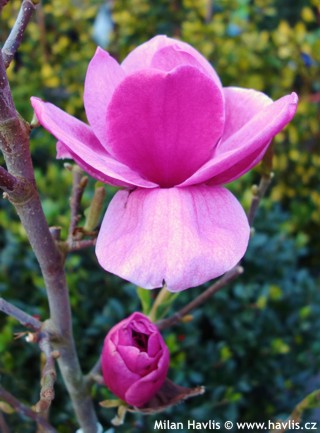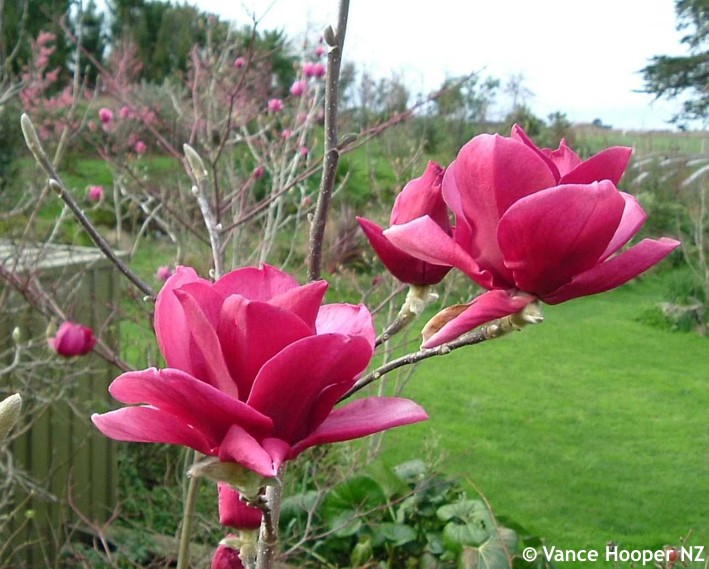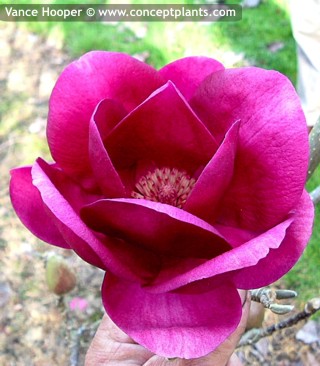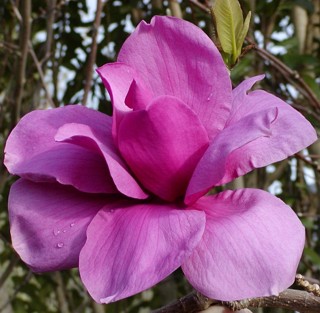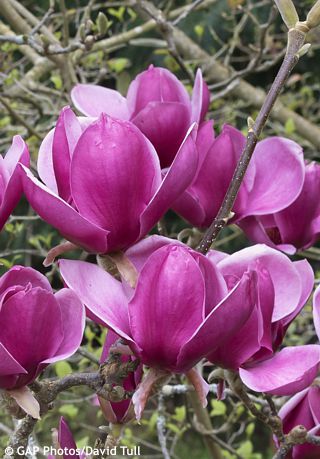Magnolia 'IAN's RED' magnolia
Following market’s thirst (or even hunger) for magnolias of the deepest and vibrant colour shades we are introducing a spectacular variety from New Zealand, again, this time bred by one of the most respectable magnolia breeders Ian Baldick. Its name is Ian’s Red and come from crossing magnolia Pickard’s Ruby and magnolia Vulcan.
Its flowers are vibrant purple-red, not fading to light shades even in wet weather. They have the aristocratic cup-and-saucer shape and open wide they just are a little larger than an adult man’s hand.
The deciduous leaves are fresh green, ovate to obovate and densely cover the whole plant when in leaf. It grows fast when young, slowing down as it matures. Ultimate height and width is yet to be observed in our conditions but is expected about 4m.
Magnolias are not supposed to be pruned. You can prune old shrubs if ill, or trim them to shape or to reduce size, or make an elementary cut to young plants of unsightly or unhealthy appearance. Do this as soon as possible after flowering to secure setting of flower buds for the following year. Be aware that each magnolia can respond differently to pruning.
Deciduous magnolias are quite easy plants. All they need is light, well-drained, acidic soil with equal moisture throughout the year. Once established they can do with occasional drought but will not look as nice as the ones with regular watering. Just pay attention to how to plant your magnolia. First, find it a spot where it will live forever and ever. It does not like transplanting. And as it makes shallow roots reaching well over its spread stay away from disturbing the roots by digging or messing about around it. Just cover the soil with bark mulch and do not plant anything else near it after say the second year after planting onwards. You could damage the very important top roots that absorb maximum moisture and nutrients from the soil. Also avoid planting magnolia too deep. It is hardy to min. -25°C (USDA zone 5b-6).
Last update 12-01-2011

































